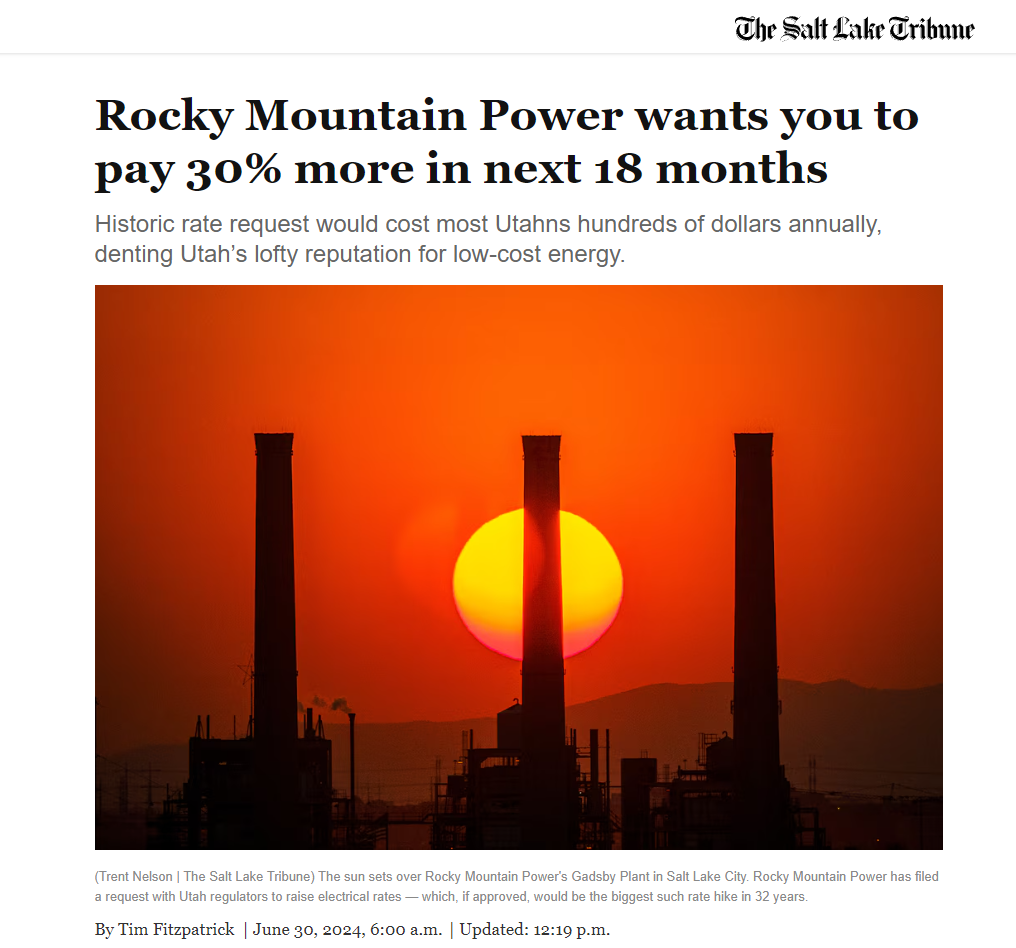
You’ve heard you can save money on your power bills by installing a photovoltaic solar energy system at your home – but do you truly understand just how financially beneficial solar energy can be?
Yes, you can reduce your monthly electricity bills significantly (or completely, if you prefer), but the economic benefits go far beyond your next payment to the power company. Keep reading to learn how you can save money with solar energy.
Residents of the Intermountain West currently pay approximately 12.3 cents ($0.123) per kilowatt hour (kWh) for electricity.
If you size your photovoltaic system appropriately, you can generate all the electricity you need to power your home. This means that, if your goal is to wipe out your power bill completely, solar energy gives you the freedom to do so.
Depending on where you live, you may also have the option to send your excess power back up the grid and receive credit from the utility company. This process, called net metering, can add an extra financial incentive for going solar, if it’s available in your area.
If you have paid attention to your municipal power bills over the years, you already know just how much – and how often – the power company has increased your electricity rates.
The U.S. Energy Information Administration (EIA) has data going back to 2001, documenting the steep and steady rise of average retail electricity costs in the U.S.
In January, 2001, the average cost per kWh for residential electricity was 7.73 cents ($0.0773). Fast forward to July, 2023, and the rate has skyrocketed to 15.98 cents ($0.1598).
That’s a 52% increase!

Now, let’s look at what that means in dollars. The EIA reports that the average U.S. household uses 10,972 kWh per year. This equates to about $850 per year in 2001 and more than $1,753 per year in 2023.
In the Intermountain West region, we have seen significantly larger increases. For example, Rocky Mountain Power has requested rate increases, on average, about every 18 months since 2003 in the following amounts:

And, compared to the national average per kWh rate, Rocky Mountain Power’s rates range up to approximately 15.5 cents ($0.155).
When you install a solar energy system, you can expect to generate power for less than half that rate, about 6 cents per kWh ($0.06).
June 30, 2024
"Rocky Mountain Power, which supplies electricity to four-fifths of Utah, is asking the state for a whopping 30.6% increase in power rates, which would raise the average customer’s bill by more than $24 a month in the next 18 months."
"And the rate could go even higher. This rate request does not include funding for a special wildfire mitigation fund created by the Utah Legislature this year. Under SB224, Rocky Mountain can collect up to $3.70 a month from residential customers in Utah to fund a self-insurance account that could be used to pay catastrophic wildfire claims in Utah after Rocky Mountain’s insurance is exhausted." The Salt Lake Tribune, 11 July 2024, [https://bit.ly/3RYnPcb]


When you install a solar energy system, you automatically increase your home’s value up to 5% or more. For a home valued at $300,000, that nets you approximately $15,000.
Your home will also appeal more to potential buyers, as more than 80% of home buyers actively look for energy-efficient amenities and ways to reduce their energy costs now and in the future. In fact, the Department of Energy Efficiency and Renewable Energy, a division of the U.S. Department of Energy (DOE), reports that homes with rooftop solar panel systems often sell twice as fast as similar homes without photovoltaic power.
Even if you don’t plan to sell your home in the near future, you will have that economic benefit waiting for you when you are ready to list it.
Contact Intermountain Wind & Solar today to schedule your personalized consultation. We look forward to showing you how you can save money with solar energy.





"All of the photos on this website are of real projects that Intermountain Wind & Solar has designed and installed.
We are proud to show off and stand behind our work."